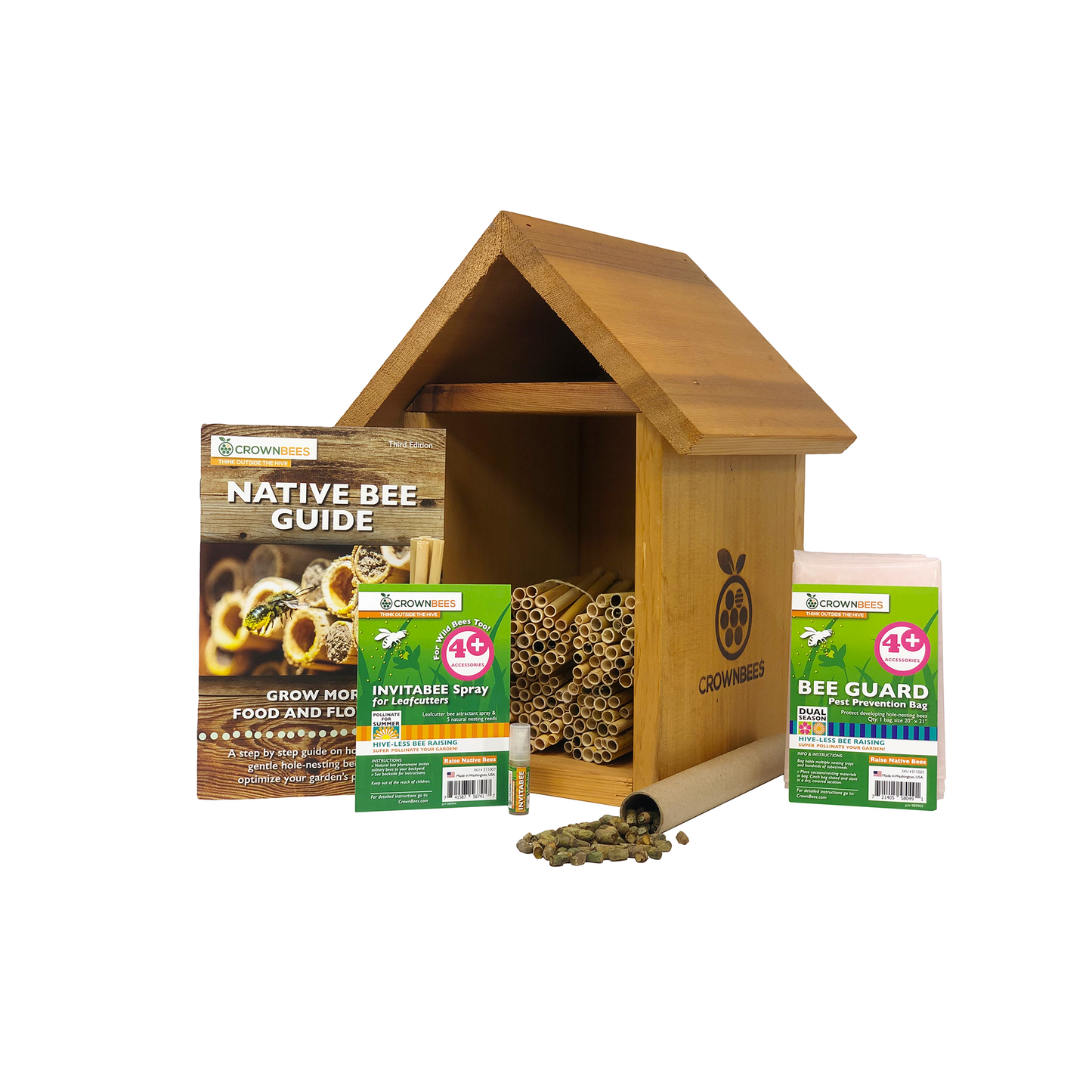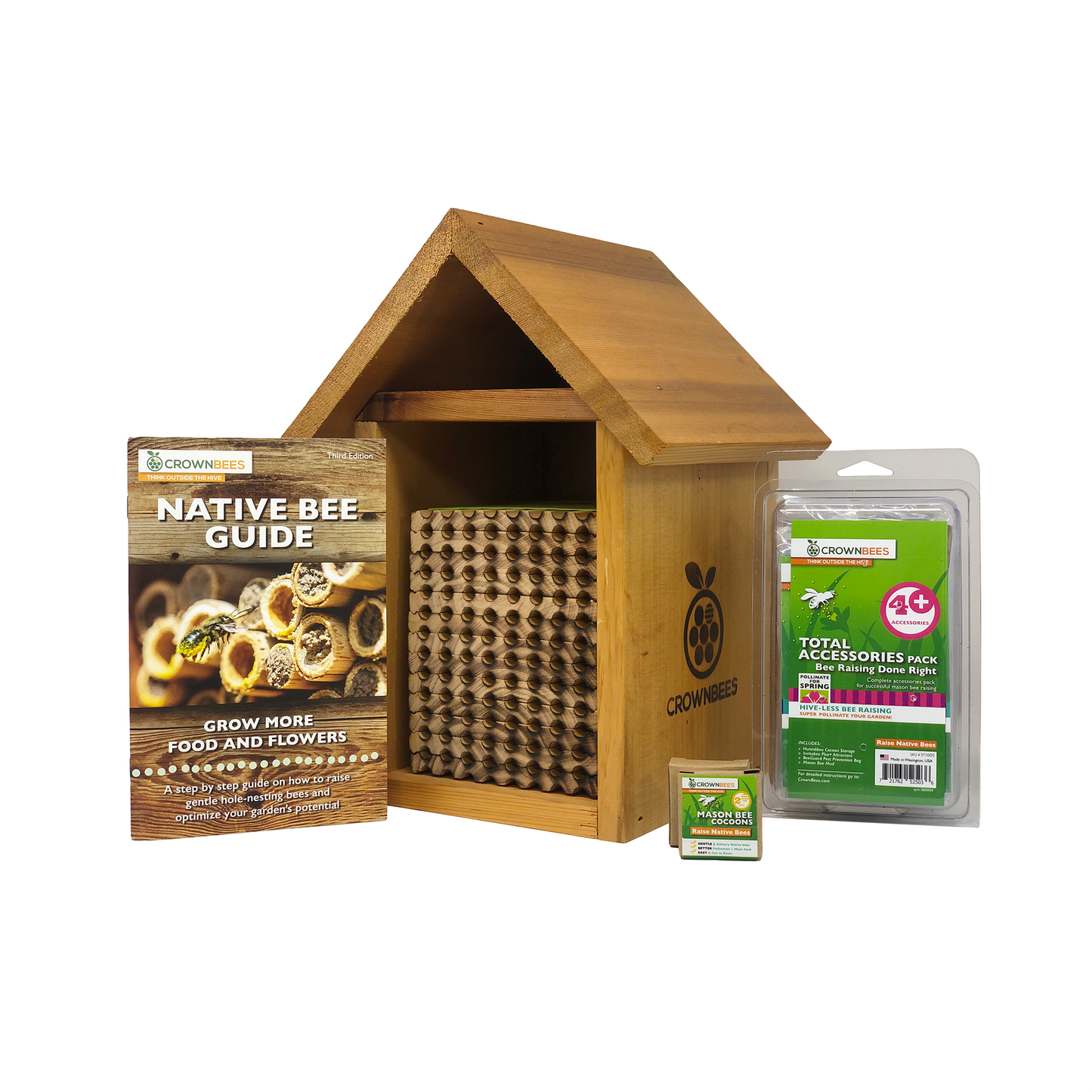
Traditionally, caring for spring Mason bees was a straightforward affair, involving three simple steps: installing the bee house, releasing the cocoons, and then enjoying the fruits of their pollinating labor. However, the emergence of the Houdini Fly, an invasive parasite targeting Mason bees, has necessitated an important addition to our care regimen.
So, what exactly is the Houdini Fly? Also known as Cacoxenus indagator, this crafty parasite is a kleptoparasite—a thief among insects. In the world of bees, kleptoparasites lay their eggs within bee nests, where upon hatching, their larvae consume the pollen intended for developing bees, sometimes even preying on the bees themselves.
The Houdini Fly earned its moniker from its remarkable escape tactics. Female Houdini Flies deposit their eggs in nest cells before Mason Bees can seal them shut with mud. Upon hatching, the fly larvae swiftly devour the pollen provisions, leaving Mason Bee larvae to perish. After pupating, adult Houdini Flies use an ingenious anatomical adaptation known as a "head blister" to break free from their confines, gradually dismantling the mud walls of the nest until they can slip through an exit hole.
Curious about their appearance? Adult Houdini Flies boast large, red eyes and a dull brown hue with distinctive horizontal stripes on their abdomen. They're typically smaller than house flies but larger than fruit flies, often seen loitering around Mason Bee houses with a leisurely flight pattern, making them easy to spot and, if necessary, dispose of.
As for their larvae, these tiny thieves resemble sticky white clusters within brood cells, often encircled by curly orange-brown frass, or waste.
Originating from Europe, the Houdini Fly was first sighted in the United States in 2011, with subsequent spread across the country. Despite efforts to contain them, these parasites have entrenched themselves, particularly in Washington state.
But here's the silver lining: through effective management practices, both farmers and backyard beekeepers can mitigate the impact of Houdini Flies, thus safeguarding wild Mason bee populations.
Adult Houdini Fly Characteristics:
- Large, red eyes on the side of the head
- Dull brown with horizontal stripes on the abdomen
- Wings fold over each other when resting
- Smaller than a house fly, but larger than a fruit fly
- Often found waiting on the outside of Mason bee houses
- Slow, hovering flight pattern—not very skittish, making them easy to squish
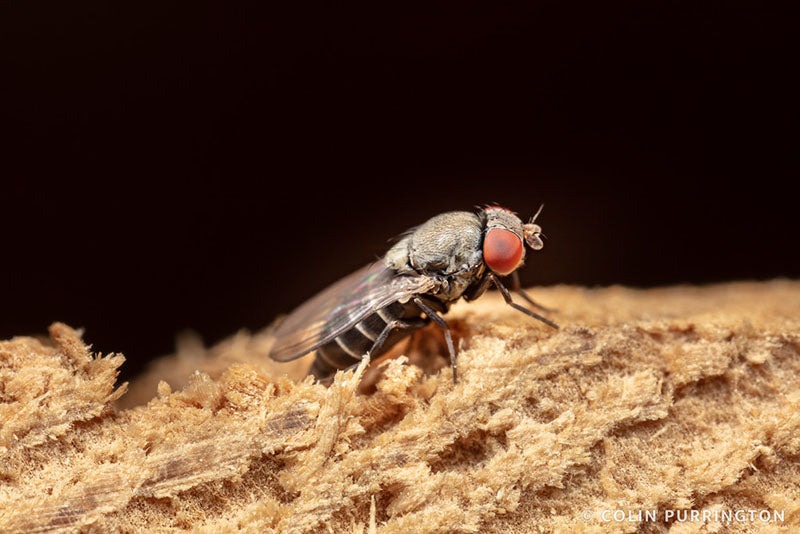

Houdini Fly Larvae Characteristics:
- Houdini fly larvae look like sticky white clusters inside the brood cell
- Multiple larvae per brood cell
- Often surrounded by curly orange/brown frass (poop)
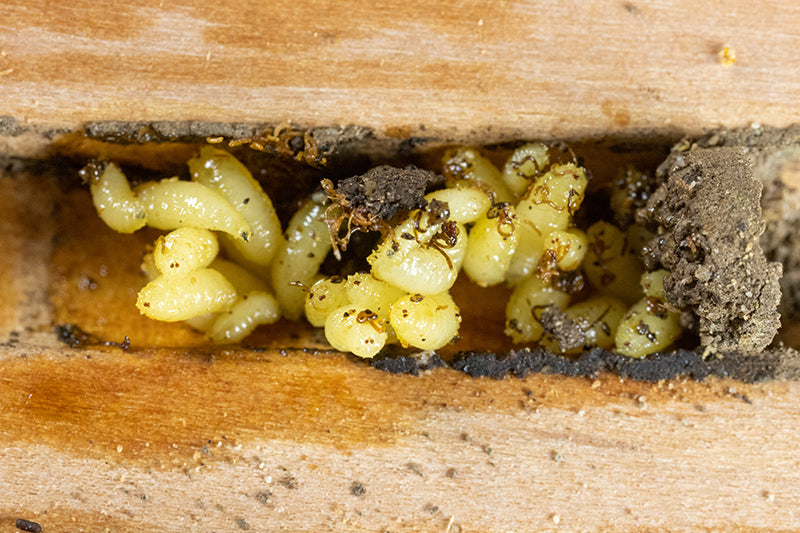
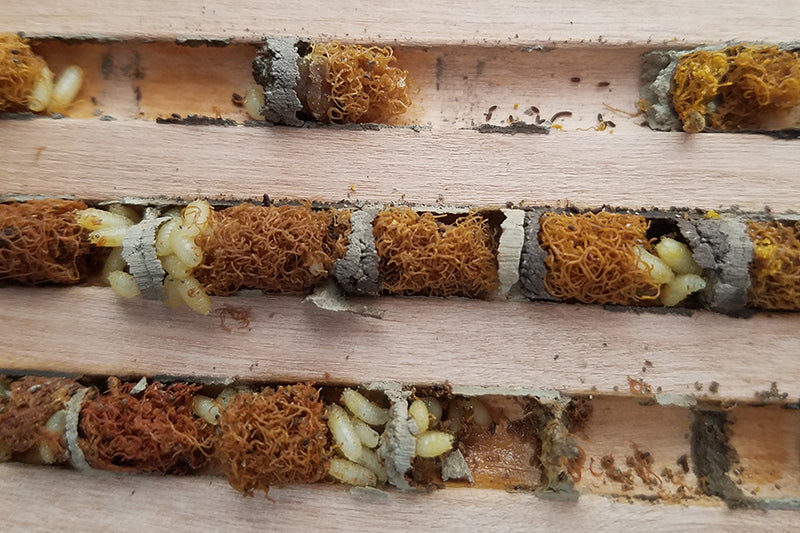
What's the origin of the Houdini fly? It's speculated that the inadvertent transportation of Mason bees from Europe, without thorough nest inspections, served as a gateway for these pests. The first recorded encounter with the Houdini fly in the United States dates back to 2011 in New York. Since then, their presence has proliferated nationwide, with the initial sighting in Washington state documented in 2019. Interestingly, Mason beekeepers had reported discovering Houdini fly larvae in their nests long before 2019. Regrettably, these pests are now believed to have established a permanent residence in Washington.
But here's the silver lining: through effective management practices, both farmers and backyard beekeepers can mitigate the impact of Houdini Flies, thus safeguarding wild Mason Bee populations.
So, how can you protect your Mason Bees from these crafty infiltrators? Here are some essential tips:
Before delving into specific strategies for safeguarding your Mason bees, it's important to acknowledge the gaps in our understanding of these parasites in North America. If you happen to observe adult Houdini flies near your bee house in spring or detect larvae within your nesting materials, come Fall, we urge you to assist in monitoring their distribution.
You can contribute by uploading photographs of Houdini fly adults or larvae to iNaturalist so others can track their spread.
Spring Protection
- Ensure your Mason bee house allows for easy inspection and cocoon harvesting.
- When purchasing Mason bee cocoons, inquire about the producer's inspection process for Houdini Flies.
- Consider controlling adult Mason Bee emergence using fine mesh bags to capture emerging bees and dispose of any Houdini Flies.
- Regularly monitor your bee house during the active season and promptly eliminate any adult Houdini Flies.
Fall Protection
Harvest Mason bee cocoons in the Fall, disposing of any Houdini Fly larvae found.
By staying vigilant and adhering to these practices, you contribute to the health and vitality of Mason Bee populations. Remember, responsible beekeeping entails proactive monitoring and intervention to counter the threats posed by pests and parasites. Together, let's ensure our buzzing allies thrive!

